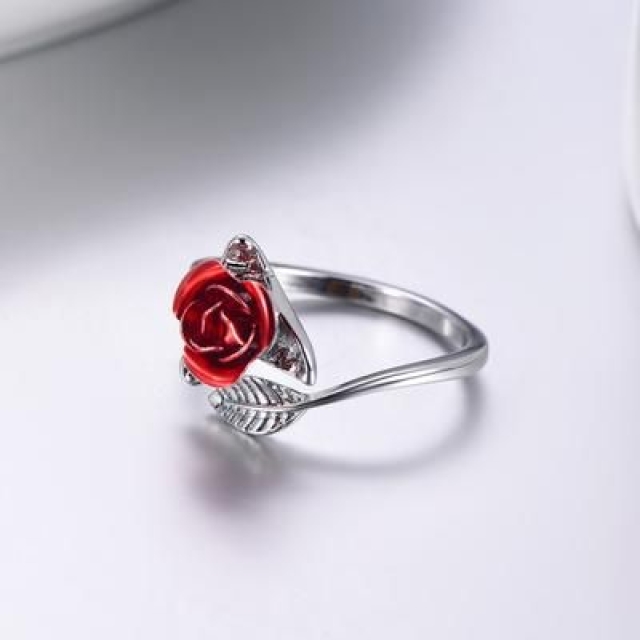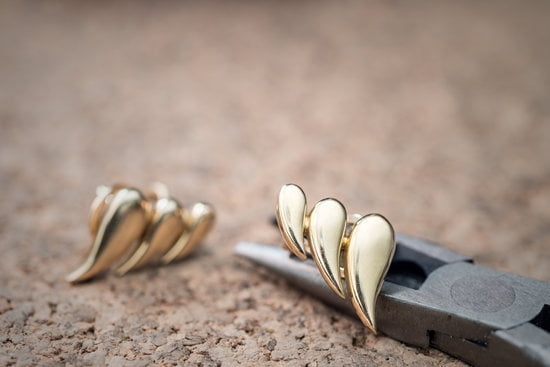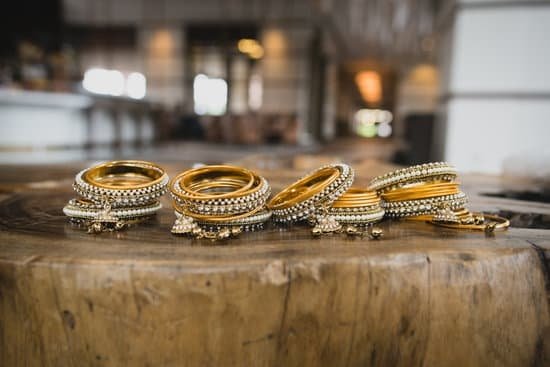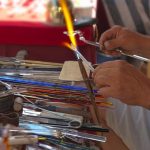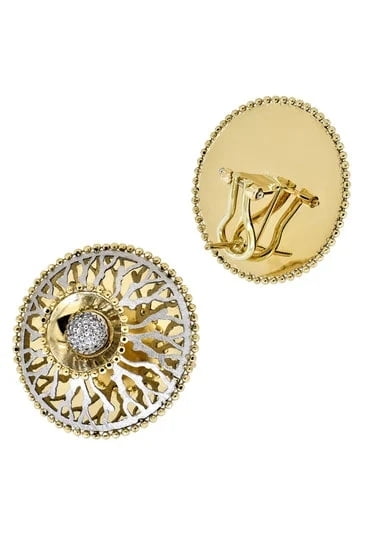Creating jewelry with a diy jewelry torch can be an enjoyable and highly rewarding experience. By using the right safety equipment and accessories, it is possible to craft beautiful pieces from copper, silver or other metals. The flame generated by a DIY jewelry torch can help add beautiful detail to different metals. Working with metal provides creative options for creating custom pieces, which range from ornamental home décor things to personalized items of jewelry.
Safety Before starting a project with a DIY jewelry torch, you should take the time to find out more about the safety requirements for this particular tool. It’s important that you know exactly what safety measures to follow when working with metal and flames so that accidents are avoided at all costs. This means wearing protective eyewear, using additional heat-resistant gloves, and ensuring that essential fire safety protocols are always adhered to while working in an enclosed space.
The Process Having acquired the right knowledge base regarding safety with regards to operating the diy jewelry torch, one can then dive into the basics of creating something unique and stunning. Start off with practicing on scrap metals first as this will help get used to how the flame works on different surfaces under varying temperatures.
The level of details that is added on each item requires careful consideration in terms of shape as well as design aspect of each aspect used in coordinating various pieces of a certain item together.
Take care not to overheat any single part during use as too much heat could cause irreparable damage or deteriorations on metals being worked. Verifying that an adequate amount of flux has been spread evenly will always pay dividends in delivering desirable result on each item crafted :).
Torch Selection
When it comes to jewelry making, especially the soldering process, a torch is an essential tool. The best torches are designed specifically for different working situations with maximum safety and efficiency in mind. Selecting the right jeweler’s torch isn’t as intimidating as you might think; here’s how to go about picking the right torch for your needs.
The first step in selecting the best torch for jewelry making is to take into account your skill level and what kind of jewelry you intend to make. Beginners should opt for ultra-precise torches that feature safe and easy operation. This allows them to work at lower temperatures and still achieve accurate results.
Certain units come with built-in adjustable flame control mechanisms which allow you to customize the size of the flame to fit your task. While these models may cost a bit more initially, they save time and money down the road due to their precision and accuracy.
For experienced users or professionals who spend hours each day soldering pieces of jewelry, a powerful hot head or acetylene styled torch is often recommended. These models tend to heat up faster thereby cutting off works session times significantly and also produce higher temperatures necessary for thicker metals such as gold or silver.
Hot head torches are also great options when creating larger pieces that require more creativity; however, they can be quite expensive compared to other models on the market today.
No matter what type of jewelry you plan on creating, it’s important that you select a high quality tool constructed from durable materials with features specifically designed towards efficient use within your chosen application such as blowtorches featuring dual port designs for increased performance when distributed evenly over heat sensitive pieces such lockets or medallions while engaged in soldering projects. The bottom line?
Jewelry making certainly requires quality tools both advanced users and beginners alike should have no trouble finding exactly what they need thanks to today’s technology advancements aimed towards providing affordable yet effective solutions tailored towards individual practitioners’ respective agendas.
Getting Started
So you want to make your own custom jewelry at home – but what do you need? First and foremost, you will need a Jewelry Torch. This is the most important item for any jewelry making project. The right torch should be easy to set up and use, reliable, and help you achieve your desired results.
- Safety Goggles and Gloves
- Butane Fuel Canister
- Jewelry Making Supplies (torches, soldering irons, flux, etc.)
- Fuel Refillable Torch with Stand
To get your diy jewelry torch set up correctly there are a few steps that will be helpful. First, ensure that all safety equipment is in place like safety goggles and gloves. These should always be used when working with torches or other tools as there can be a risk of burns or injury.
Next, it’s time to fill up your fuel canister on the back of the torch with butane fuel. Be sure to only use approved fuels from trusted brands. Before filling the tank make sure it’s free from debris or anything else that could stop it from working correctly./>
Once filled, attach the torch back together ensuring all connections points are properly aligned. Now it’s time to connect up all of your jewelry making materials – torches, soldering irons, flux – before getting started on your masterpiece.
Torch Care
Caring for your torch is an essential part of working on DIY jewelry projects. The proper cleaning and maintenance process ensures that you’ll be able to work with the most precision, avoiding any accidental damage or lost time. By following some simple steps, you can ensure that your torch stays in great condition and continues to provide reliable performance during each project.
Step-by-Step Tips for Torch Care
- Make sure to use a clean cloth every time you use the torch. This prevent residual dirt from building up and clogging the parts.
- Clean out the nozzle of the torch regularly using a slightly damp cloth and a soft brush attachment.
- Dismantle the torch at least once every month and clean it thoroughly with a rust remover spray.
- Lubricate all parts of the torch with a lubricant designed specifically for metal to help reduce friction points.
- Check all sealing components and replace them if necessary.
- Inspect for loose connections & replace old welding hoses if needed.
Basic Techniques
Jewelry making with a torch requires the artist to use a series of techniques to create the desired effect. Because a jewelry torch is capable of extremely high temperatures, there are several safety precautions that should be taken prior to any work being done in this medium.
Before beginning work on a piece, it is imperative that an appropriate ventilated workspace be established and all materials needed for the project should be prepped and safely placed away from any potential sources of heat or open flame.
Setting Up Your Workstation
It is important that all necessary tools and materials needed for your project be in reach before starting to use the jewelry torch. Having everything within easy access helps minimize distractions that can occur while handling the hot tools. Additionally, having a safe surface such as steel or stone to place heated pieces on during cooling periods also helps reduce chances of accidental burns or other heat related injuries.
Proper Fuel Use and Handling
Care should be taken when working with fuels such as acetylene or propane as they can become explosive when not handled properly. Prolonged exposure to open flames should also be avoided as this can result in serious injury if left unchecked. In addition, additional safety equipment such as fire blankets, gloves, face shields, and breathing apparatus should always remain nearby in case of emergency situations.
Forming Jewelry with a Torch
Once set up has been completed, it is time to begin forming the jewelry pieces themselves. It is best practice to begin simple projects such as rings and earrings using paper clip mock-ups so that timing and technique may both be tested without wasting precious metals or stones.
Creating these mock-ups first allows you become accustomed with how long various metals take to melt, how each individual handle behaves at different temperatures, as well as other factors related to tool control when utilizing a jewelry torch.
Advanced Techniques
The Basics of Gas Jewelry Soldering
For a jewelry maker with experience, they may already know the basics of soldering, such as which types of torches and tips to use, along with the safety precautions necessary. A gas jewelry torch is designed for this purpose, and usually has separate headpieces for oxygen or propane welding, along with different tip sizes to adjust the flame size.
Basic soldering techniques involve heating up the metal for a few seconds, then applying a flux-coated soldering alloy so that it melts and pools in place. When everything is heated enough, flux residues can be removed by using a flux brush or pickling solution.
Torch Cleaning Tips
It is always good practice to keep your torch clean between uses. This helps keep it free from dirt and debris, as well as prolong its life.
Regularly clean out any buildup on firing heads and tips using steel wool or a brass cleaning brush; straighten any bent tips before use; check all connection points to make sure they are in working order; replace ignition elements when needed; and follow the manufacturer’s maintenance instructions closely. If you have an issue with your torch not working properly during practices, firstly check the connections prior to replacing any parts or furthering consultations.
Additional Safety Considerations
Make sure that when you are using a gas jewelry torch that you are familiar with all safety measures for food handling including proper ventilation and a fire extinguisher on hand should an emergency happen. Also make sure that when soldering precious metals like gold and silver you are taking the time to ensure nothing gets burned leaving stampedes on metal surfaces like necklaces or earrings.
Similarly, after use be sure to completely turn off both gas supply valves from inside the tank before putting it away safely-this will help avoid future accidents due to faulty equipment. Last but not least do regular maintenance checks on your jeweler’s torch kits looking out for worn hoses or sparking ignition elements-these can become dangerous if left unchecked.
Troubleshooting
If you are using a DIY jewelry torch and run into troubles, there are some troubleshooting tips that you can use so that the problem is resolved quickly. Common problems with DIY jewelry torches include:
- The torch won’t stay lit.
- The flame isn’t wide enough for the job to be done correctly.
- The flame persists even without the torch being lit.
Troubleshooting Tip #1: Check The Fuel Nozzle
The first thing to do when your jewelry torch isn’t functioning properly is to check the fuel nozzle. If it is clogged or not attached tightly, then it will cause problems such as not staying lit or an uneven flame.To clean the nozzle, unscrew it and use a needle or other thin instrument to poke inside of it and ensure that all debris is cleared out.
You may also want to check the pres sure on the regulator as this could also be contributing. Finally, make sure the nozzle is attached tightly before putting everything back together.
Troubleshooting Tip #2: Clean The Orifice
Another common issue that can be easily solve with a DIY jewelry torch is if the flame isn’t wide enough. This issue means that there is dirt and debris in the orifice of your torch.To clean this piece out, simply unscrew it and use an old toothbrush (or similar) to brush away any material.
This should ensure that your jewelry begins burning evenly from this point on.If there is still sediment present after cleaning it out, then you may need to finally replace it with a new piece for optimal performance.
Safety Tips
Safety is essential when using a torch for DIY jewelry making. Torch work involves temperatures over 1000°C and bodies of flammable gas, so it is important to take all of the necessary safety precautions to help prevent an accident caused by fire or explosion. Here are some essential safety practices to keep in mind when using a torch:
First and foremost, make sure your workspace is clean and clear of any obects that could catch fire. Set everything up on a sturdy working surface, ideally one constructed out of stone or fire-resistant materials such as stainless steel. Keep all combustible items away from the area, including rags, oils, waxes, solvents etc. Clear the room before lighting the torch – no smoking near open flame.
Second, understand exactly how your particular torch works and the types of safety equipment that you need while operating it. Use only recommended torches and regulators as indicated by their manufacturer, which can be found in specialized stores for jewelry making supplies.
Invest in proper protective clothing as well – welding gloves and a face shield will provide excellent protection against any burns and hot metal splatterings. Before actually igniting the torch, make sure that all hoses are securely attached and have been checked for leaks or damage before using the tank regulator valve.
Thirdly, while working with your spray solvents there is a risk of inhalation injury due to their combustibility-if given enough air contact they can lead to flames or explosions if ignited directly without warning signs or measures taken to protect yourself. Make sure that you have plenty of ventilation in the room during this process to avoid ingestion of these dangerous particles.
Make sure you keep all aerosol containers out of reach off children at all times as well-even unopened cans pose a risk if inhaled in large quantity due to their high level of toxicity levels depending on what products were used (acetone being among them).
Finally be aware that bags containing supplies can become heated up easily around open flames; always allow media bags or any other plastic container nearby your Torch table/station move slowly since they tend to heat quickly when exposed directly over 1000°C temperatures for extended periods time in close proximities.

Welcome to my jewelry blog! My name is Sarah and I am the owner of this blog.
I love making jewelry and sharing my creations with others.
So whether you’re someone who loves wearing jewelry yourself or simply enjoys learning about it, be sure to check out my blog for insightful posts on everything related to this exciting topic!

